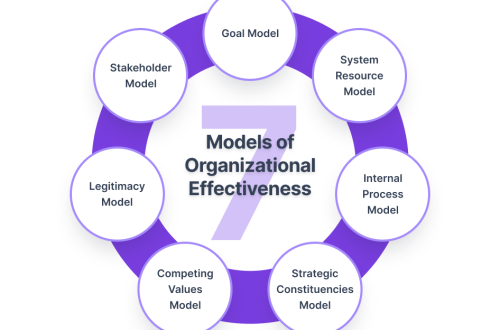Great businesses are not born from a single tactic or a fleeting trend. They are built on enduring principles—time-tested foundations that guide decision-making, shape culture, and sustain growth through changing markets. This long-form guest post dives deep into eight core principles that separate resilient, high-performing companies from the rest. For entrepreneurs, leaders, and marketers, understanding these principles and how to apply them is essential to creating an organization that lasts.
Why principles matter more than tactics
Tactics change fast: new platforms, frameworks, and buzzwords come and go. Principles, however, provide a stable lens for evaluating opportunities and risks. Principles translate into consistent behaviors, predictable outcomes, and a stronger brand reputation over time. They also make strategy easier to communicate and execution more consistent across teams and geographies.
1. Purpose & Vision: The North Star
What this principle means
A clear purpose explains why the business exists beyond profit. A compelling vision paints a picture of the future the company seeks to create. Together they align people, attract customers, and provide guardrails for choices.
Why it endures
Purpose and vision are the mental models employees and customers use to decide whether to commit. During tough times—market downturns, supply shocks, leadership changes—the clarity of purpose helps prioritize actions and maintain morale.
How to operationalize it
- Write a concise purpose statement (one sentence) that answers: Who do we serve and why does it matter?
- Create a three- to five-year vision with measurable milestones.
- Embed purpose into processes: hiring, performance reviews, product decisions.
- Communicate relentlessly—purpose must be more than a poster; it must be referenced in daily decisions.
Practical example (framework)
- Start every team meeting with a quick note on how the work ties to the purpose.
- When launching products, include a one-line “purpose test” stating why this product furthers the company mission.
2. Customer Obsession: Not Just Satisfaction — Devotion
What this principle means
Customer obsession goes beyond service quality. It centers the entire organization—R&D, marketing, operations—around anticipating and solving real customer problems.
Why it endures
Markets evolve, but humans value solutions that solve meaningful problems. A customer-obsessed company adapts faster because it listens and iterates driven by real needs.
How to operationalize it
- Voice-of-customer programs: combine surveys, interviews, support tickets, and social listening to create a unified insights engine.
- Customer journey mapping: identify friction points and measure their impact on retention and lifetime value.
- Cross-functional customer squads: embed product, design, and service members to deliver continuous improvements.
KPIs to watch
- Net Promoter Score (NPS) trends
- Customer Lifetime Value (CLTV) vs. Acquisition Cost (CAC)
- Churn rate and reasons for churn
3. Operational Excellence: Consistency at Scale
What this principle means
Operational excellence is the discipline of designing repeatable, efficient processes that produce consistent outcomes—quality, cost, and speed.
Why it endures
Even brilliant strategy fails without reliable execution. Operational rigor lets companies scale while maintaining margins and customer trust.
How to operationalize it
- Document core processes and make them accessible.
- Measure process performance (cycle time, defect rates, throughput).
- Continuous improvement culture: encourage small, regular enhancements (lean/six sigma practices).
- Automate where it reduces error and cost, but keep humans in decision points that require judgment.
Tools & practices (bullet list)
- Standard operating procedures (SOPs)
- Root cause analysis for incidents
- Regular operations reviews with measurable OKRs
4. Financial Discipline: Fuel Without Waste
What this principle means
Financial discipline ensures capital is allocated to initiatives with clear returns and risk is managed responsibly. It balances growth ambition with long-term sustainability.
Why it endures
Access to capital fluctuates; businesses that steward resources wisely survive downturns and capitalize on opportunities.
How to operationalize it
- Budget with strategic intent: link budgets to outcomes and potential ROI.
- Maintain a cash runway policy: define minimum cash/reserve levels for stability.
- Rigorous investment criteria: require scenarios and sensitivity analysis before large spends.
- Regular financial transparency: give leaders a clear view of costs and trade-offs.
Quick checklist
- Monthly variance analysis
- Scenario planning for 6, 12, 24 months
- Clear capital allocation governance
5. Adaptability & Innovation: Continuous Renewal
What this principle means
Adaptability is the capacity to pivot when markets shift. Innovation is the systematic creation of new value—products, services, or models.
Why it endures
Disruption is constant. Companies that institutionalize learning and experimentation maintain relevance and capture new growth waves.
How to operationalize it
- Dual operating system: run the core business efficiently while maintaining small, experimental teams for new ideas.
- Fast feedback loops: prototype, test with customers, and iterate quickly.
- Failure-tolerant culture: celebrate learnings, not just successes.
- Investment in capability building: training, partnerships, and R&D.
Practical tactics
- Quarterly innovation sprints
- Minimum Viable Product (MVP) approach for new concepts
- Internal incubators and external partnerships
6. Talent & Culture: The Engine of Execution
What this principle means
Great businesses attract, develop, and retain people whose skills and values align with the company’s purpose. Culture is the behavioral glue that turns strategy into results.
Why it endures
Processes change, but people execute. A healthy culture promotes accountability, creativity, and sustained high performance.
How to operationalize it
- Hire for values and potential, not just past experience.
- Invest in development pathways: mentoring, rotation programs, and clear promotion criteria.
- Design recognition systems that reward collaboration and long-term contributions.
- Measure engagement and act on feedback quickly.
Leadership behaviors that matter
- Clarity in expectations
- Visible support for psychological safety
- Frequent, constructive feedback
7. Ethical Leadership & Trust: The Invisible Capital
What this principle means
Ethical leadership is consistent, principled decision-making that earns stakeholder trust—employees, customers, partners, and regulators.
Why it endures
Trust is hard to build and easy to lose. Reputation damage can destroy value faster than any competitor.
How to operationalize it
- Define ethical standards and ensure they are integrated into performance metrics.
- Transparency in communication, especially when mistakes happen.
- Robust governance: clear policies, compliance processes, and independent oversight where relevant.
- Stakeholder engagement: listen and respond to concerns proactively.
Signals of strong ethical leadership
- Low litigation and compliance incidents
- High supplier and partner retention
- Employee willingness to speak up
8. Long-term Thinking & Sustainability: Outcomes Beyond Quarterly Results
What this principle means
Long-term thinking prioritizes sustainable value creation—environmental, social, and economic—over short-term gains that may undermine future prospects.
Why it endures
Investors, customers, and regulators increasingly evaluate businesses on their sustainability credentials. Long-term strategies build competitive advantages and reduce systemic risk.
How to operationalize it
- Include long-term metrics (e.g., carbon footprint, social impact, brand equity) in executive scorecards.
- Strategic horizon planning: balance zero-to-one bets with steady-state optimization.
- Stakeholder capitalism approach: consider impacts across communities and ecosystems.
- Sustainable supply chain practices: source responsibly and audit regularly.
Steps to start
- Conduct a materiality assessment to identify priority sustainability areas
- Set science-based or otherwise credible targets
- Report progress transparently and regularly
Bringing the principles together: a short playbook
- Define: codify purpose and vision in a way everyone can remember.
- Listen: build systems to hear customers and frontline employees.
- Standardize: document processes and measure results.
- Allocate: spend capital based on prioritized outcomes and risk analysis.
- Experiment: run controlled pilots to learn fast and cheaply.
- Invest in people: make talent development a strategic function.
- Govern: set and enforce ethical standards.
- Report & iterate: publish progress on long-term targets and adapt policy as needed.
These steps create a virtuous loop: purpose-driven clarity fuels customer focus; customer insights sharpen operations and innovation; disciplined finance and ethical leadership sustain investment in people and sustainability.
SEO & Content Strategy Notes (brief)
- Primary keyword: Enduring principles of great businesses — use in title, first paragraph, and subheadings where natural.
- Supporting keywords: timeless business principles, business longevity, customer obsession, operational excellence, ethical leadership — sprinkle naturally through content.
- Meta description idea (for editors): Discover eight enduring principles that power the most resilient companies—purpose, customer obsession, operational excellence, financial discipline, innovation, talent, ethics, and long-term sustainability.
- Content assets to support SEO: infographic summarizing the eight principles, downloadable checklist, and case study examples (one-pagers) to increase backlinks and dwell time.
Conclusion
Enduring businesses are built, not stumbled into. They rely on repeatable principles—clarity of purpose, relentless customer focus, disciplined operations and finance, an appetite for innovation, people-first culture, ethical leadership, and long-term thinking. These principles create resilience and a fertile ground for sustainable growth. Leaders who translate these principles into consistent practices will not only survive change—they will shape it.
Frequently Asked Questions (FAQ)
1. How do I start implementing these principles in a small startup with limited resources?
Begin with one or two high-impact practices: clarify purpose and build a simple voice-of-customer loop (weekly customer interviews). Use low-cost tools and involve the whole team to instill discipline without heavy investment.
2. How can I measure whether our culture aligns with these principles?
Use a mix of qualitative and quantitative measures: employee engagement surveys, turnover by performance tier, frequency of cross-functional collaboration, and net promoter scores from employees and customers.
3. Are these principles equally important for digital-native startups and traditional manufacturing firms?
Yes—though the operational specifics differ. The underlying principles (purpose, customer focus, discipline, adaptability, talent, ethics, long-term thinking) are universal. Tailor execution to industry constraints and regulatory environments.
4. What are common pitfalls when companies try to become more customer-obsessed?
Common mistakes include focusing only on surveys without behavioral data, incentivizing short-term satisfaction at the expense of long-term value, and creating siloed “customer teams” that don’t collaborate with product or operations.
5. How do you balance short-term financial pressures with long-term investments in sustainability?
Adopt scenario planning and allocate a defined percentage of free cash flow to long-term initiatives. Communicate with stakeholders about the strategic rationale and expected timelines for returns.
6. How should leadership handle failure when experimenting with innovation?
Treat failure as an information event. Capture learnings in structured post-mortems, share them transparently, and apply those insights to future tests. Protect experimental teams from punitive responses when they follow best practices.
7. Can these principles be measured in a single dashboard?
They can be translated into a compact executive dashboard reflecting leading and lagging indicators: purpose alignment score, NPS, operational KPIs (quality and cycle time), cash runway, innovation velocity, engagement scores, and sustainability metrics. Use the dashboard to inform strategic cadence meetings.





